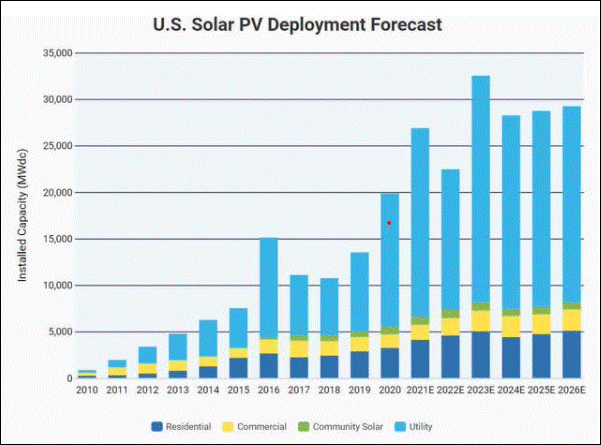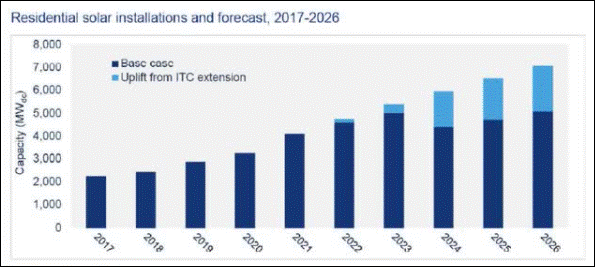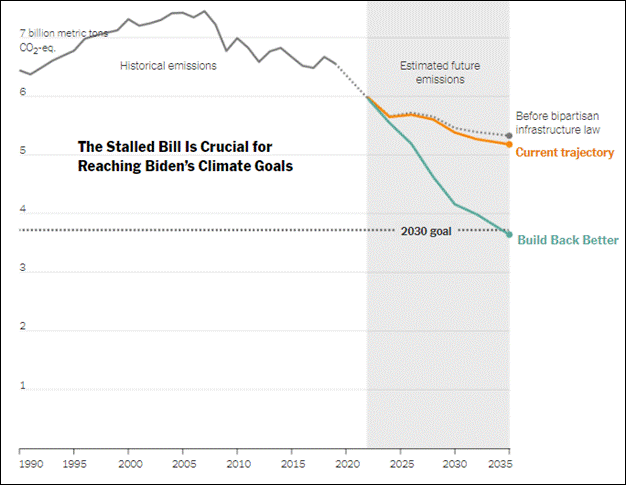What a difference a year makes!
Last January, hopes ran high that Congress would pass landmark climate legislation in 2021. But with Democrats controlling Congress by a razor-thin margin, President Biden had to walk a tightrope between competing interests within his own party. In the end, Biden’s Build Back Better plan got pulled under objections of coal-state senator Joe Manchin (D-WV), leaving the president’s hallmark legislative initiative in limbo.
Now, as we enter an election year, passing any new laws in Congress just got harder. And the stakes could not be higher. If Republicans regain control of the House and Senate this fall, it will put to an end any meaningful efforts to reduce greenhouse gas emissions at the national level.
Here’s a quick rundown on the state of play of federal solar legislation in 2022, with just 10 months to go before the mid-term elections.
Short-term Outlook for Solar Remains Bright
Fortunately, not all climate initiatives ran into legislative dead ends last year. President Biden’s $1.2 trillion infrastructure package, approved by Congress last fall, includes about $50 billion to help fortify communities against impacts from global warming. Notably, the bill includes $7.5 billion to build a national network of chargers for electric vehicles.
Combined with congressional extension of solar investment tax credits (ITC) at the end of 2020, solar capacity additions are expected to grow at records levels for at least the next couple of years. But, after that, more legislative action will be required if the Biden administration is to have any chance of cutting carbon emissions from the nation’s power sector in half by 2030.
Here’s how the Solar Energy Industries Association (SEIA) and its consultant, Wood Mackenzie, size up the current market for the U.S. solar photovoltaics installations through 2026:

Thanks to the solar ITC extension in 2020 and a massive backlog in electric utility orders, U.S. solar capacity additions are expected to remain strong through at least 2023. With more than 30,000 MW of solar capacity additions slated for completion that year, it would mark a 50% increase in the rate of solar installations since 2020, and double the prior production record set back in 2016.
After 2023, however, clouds start to emerge over this solar industry forecast. With the Build Back Better (BBB) plan now undergoing reconstruction, renewing the solar ITC beyond 2023 has become a top legislative priority.
BBB had proposed extending this tax credit for 10 more years, through 2034, while boosting the size of the credit from 26% to 30% of the installation cost. If the solar ITC lapses or expires, however, the projected rate of residential solar installations may start to contract in 2024 and achieve only about 70% of the forecasted rate of installations by 2026, as shown below:

Solar Capacity Additions by Utilities are Key to Meeting U.S. Climate Goals
While the residential market will likely still be a driver of future growth of the solar power industry, it’s dwarfed by the size of the utility market, which could take a far bigger hit if other elements of BBB are left out of a reformulated plan. Chief among these is a financing mechanism that would reward utilities for drawing an increasing share of electricity from solar, wind and other clean energy sources, while penalizing others that do not start to reduce their carbon emission profiles.
All told, passing all climate elements of the BBB plan could accelerate growth in the nation’s wind and solar capacity by three to four times, according to SEIA’s industry forecast. But even then, the nation’s carbon-cutting goals might not be achieved until five years after President Biden’s declared target for 2030, researchers caution.
By comparison, the infrastructure bill already passed by Congress barely moves the needle on the nation’s carbon emissions trajectory. Here’s how The New York Times compares passage of the infrastructure bill against President Biden’s more ambitious BBB plan.

Where We Go from Here
If past history is any guide, solar investment tax credits should survive any congressional cutbacks, so that residential customers of solar power continue to benefit financially from purchases of solar panels and related battery storage equipment. By carving out a 10-year extension, the BBB bill had hoped to break a pattern of extending these tax credits for just one to five years at a time, sometimes with lapses between renewal periods.
This uneven tax treatment has made it harder for large business customers to map out a financing plan for their carbon-reduction strategies. Given this, solar ITC extensions will likely top the list of funding priorities to come out of the BBB’s resurrected $555-billion climate change spending program.
Other elements of the bill – passed by the House last fall, but which now await uptake by the Senate – include the following:
- Beyond solar and wind tax credits, BBB makes other federal tax subsidies available to consumers and manufacturers of electric vehicles, electric heat pumps and battery storage equipment that are designed to electrify the economy without pollution.
- BBB would open up leases for wind power development in federal waters in the Atlantic Ocean and Gulf of Mexico, and ban new oil and gas leases off the Atlantic and Pacific coasts and off the Eastern Gulf of Mexico. In addition, a fossil fuel leasing program in the Arctic National Wildlife Refuge (begun under President Trump) would be repealed.
- Oil companies would increase their royalty payments to drill on federal lands, and a federal tax on imported petroleum products would be reinstated. Oil and gas companies would also start to pay a fee on leaks of methane, a powerful greenhouse gas that frequently escapes from oil and gas wells. (However, Sen. Manchin of West Virginia has singled out this provision as one he will not support.)
- BBB also takes a multi-pronged approach to helping low income and minority communities that are disproportionately harmed by environmental problems. This includes $15 billion to finance clean energy projects and nearly $3 billion to plant trees in poor neighborhoods that can be 10 degrees hotter than leafier sections of a city.
If all of these elements of BBB were to pass Congress in some form, they could prevent about one billion tons of carbon dioxide emissions by 2030. That’s the equivalent of taking roughly all the cars in the United States off the road for one year, according to an analysis by Rhodium Group, an independent research organization. But, according to this analysis, this would still bring the country to only the halfway point in President Biden’s goal of achieving a 2 billion-ton emissions reduction by 2030. More progress needs to be made in short order.
No matter how you slice it, shrinking your own carbon footprint starts at home! Solaflect is your home energy management partner. We help you install clean and affordable solar electricity and home battery systems for a more resilient and climate-friendly future. Click here to contact us, or call (802) 649-3700, or text (802) 308-3018. Working together, the power is in our hands to make a difference.




